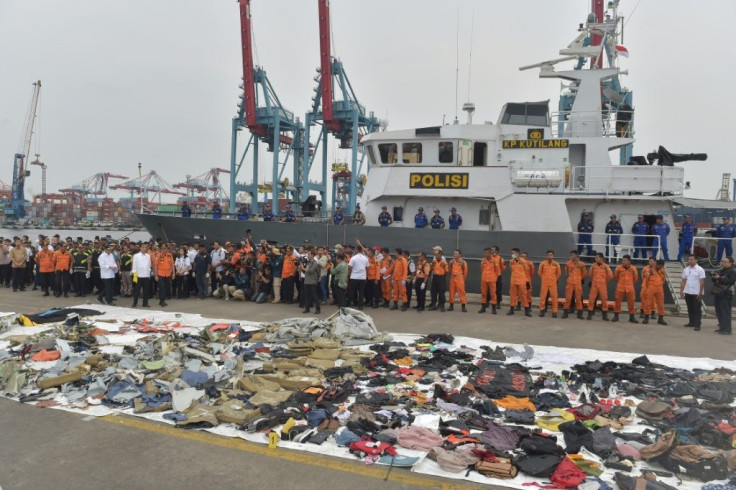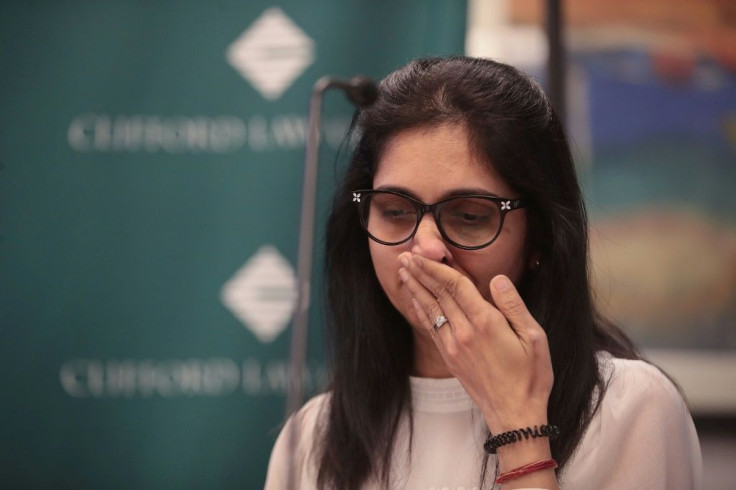Victims Of Deadly Crashes Overshadow Boeing 737 MAX Flight Restart
Brittney Riffel was seven months pregnant when the Boeing 737 MAX her husband was aboard slammed into a field in Ethiopia. Now, the plane's imminent return to the skies worries her.
"There are still a lot of issues to be fixed before it can fly again," Riffel told AFP earlier this week. "I feel like they are again cutting corners."
Riffel, who also lost her brother-in-law to the crash, is among around 140 family members of victims from the ill-fated Ethiopian Airlines flight now suing Boeing over the calamity, the second of two crashes that together killed 346 people.
More than a year and a half after grounding the MAX, the Federal Aviation Administration (FAA) on Wednesday cleared the jet for service after requiring a series of upgrades, including to a flight handling system that downed both jets after activating improperly.

The FAA's move opens the way for airlines to resume service on the jet as soon as late December. Aviation experts say the MAX can eventually become a fixture in air fleets again if it develops a reputation for safe and reliable service.
But the jet will face skepticism at the outset -- a challenge sharpened by the presence of victims' families who plan to remain vocal as they await their day in court with Boeing.
Riffel said she feels "blessed with family and friends" who have supported her and her and her daughter since the tragedy, but "nothing can heal the fact that your loved one died due to corporate greed, money, politics and power," she said.
She plans to keep speaking out.
"We are not just grieving family members, but we are concerned as members of the flying public," Riffel said. "We care about this not happening to anyone else."

The Ethiopian Airlines crash came less than five months after a 737 MAX flying for Lion Air crashed in Indonesia. In both cases, an anti-stall system called the Maneuvering Characteristics Augmentation System (MCAS) repeatedly pointed the jets downward, preventing pilots from regaining control of the planes.
Subsequent reviews and congressional investigations have raised pointed questions about why Boeing and the FAA did not ground the jet after the Lion Air crash.
There have been revelations about employees inside Boeing who complained about a lax approach to safety and damning internal messages between Boeing employees about misleading regulators, including one 2017 missive that said the MAX was "designed by clowns who in turn are supervised by monkeys."

A 239-page congressional report released in September summarized the calamities as "the horrific culmination of a series of faulty technical assumptions by Boeing's engineers, a lack of transparency on the part of Boeing's management and grossly insufficient oversight by the FAA."
In clearing the MAX, the FAA said it followed an exhaustive process to vet the jet before its recertification, which included a test flight by Administrator Stephen Dickson.
In August, the agency released a 91-page technical review document outlining its rationale for the proposed airworthiness declaration.
Boeing, too, has emphasized its legwork in meeting regulatory demands, conducting about 1,400 test flights as part of a process that includes revamped pilot training and system upgrades to ensure the jet's safe return.
But critics complain that the process remains cloaked in secrecy.
The nonprofit group FlyersRights is suing the FAA for disclosure of documents on the recertification "so independent experts and the public can review the basis on which the FAA intends to unground the plane," the group says on its website.
Attorneys representing the victims in the Boeing litigation say the aviation giant has also refused to share key documents on what happened in the Ethiopian Airlines accident. Boeing said they are barred from releasing such information because the crash is still being probed by Ethiopian authorities.
"Boeing has been very slow in producing relevant materials, documents that will help the relatives understand why their loved ones died," said Chicago attorney Bob Clifford, the lead counsel in the case.
Clifford expects the litigation to play out over at least a couple more years. Some families will likely settle, but others want to confront Boeing.
"Every person has different goals," Clifford said. "You can be sure that there will be some families who will insist on seeing Boeing admit its negligence and fault or will go to trial."
Riffel is among those who plan to keep fighting.
"I don't care about the money," she said. "I want justice."
© Copyright AFP {{Year}}. All rights reserved.





















